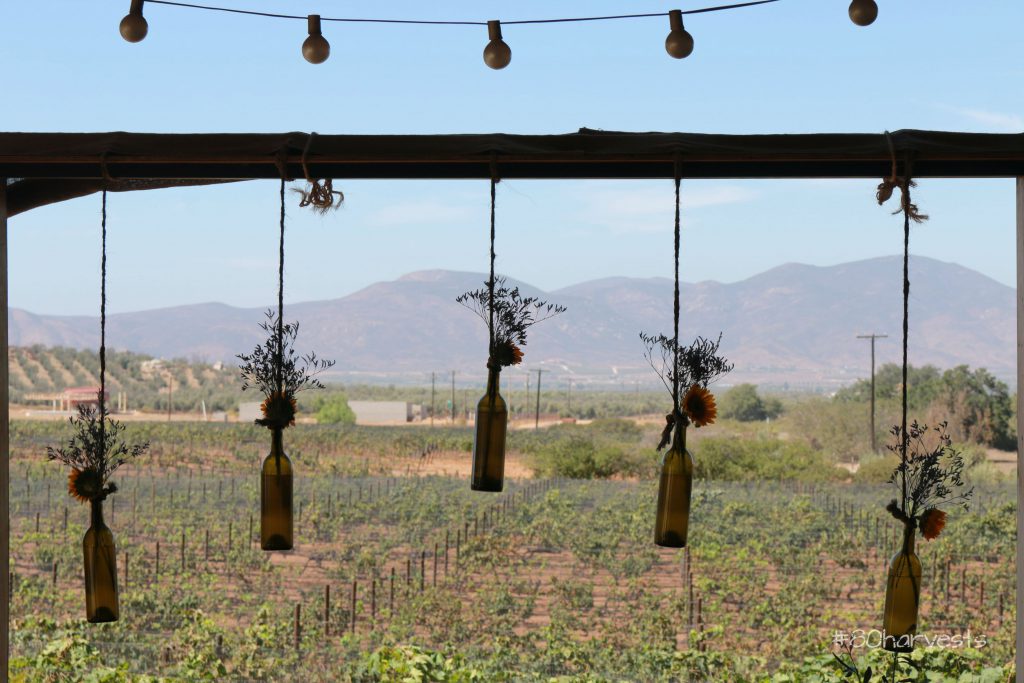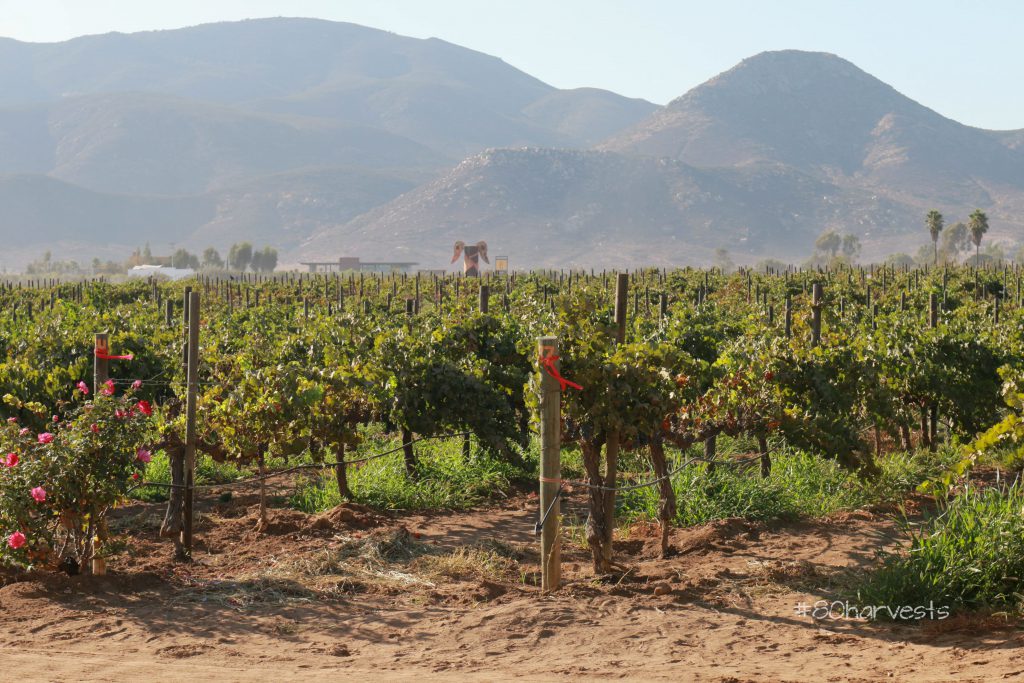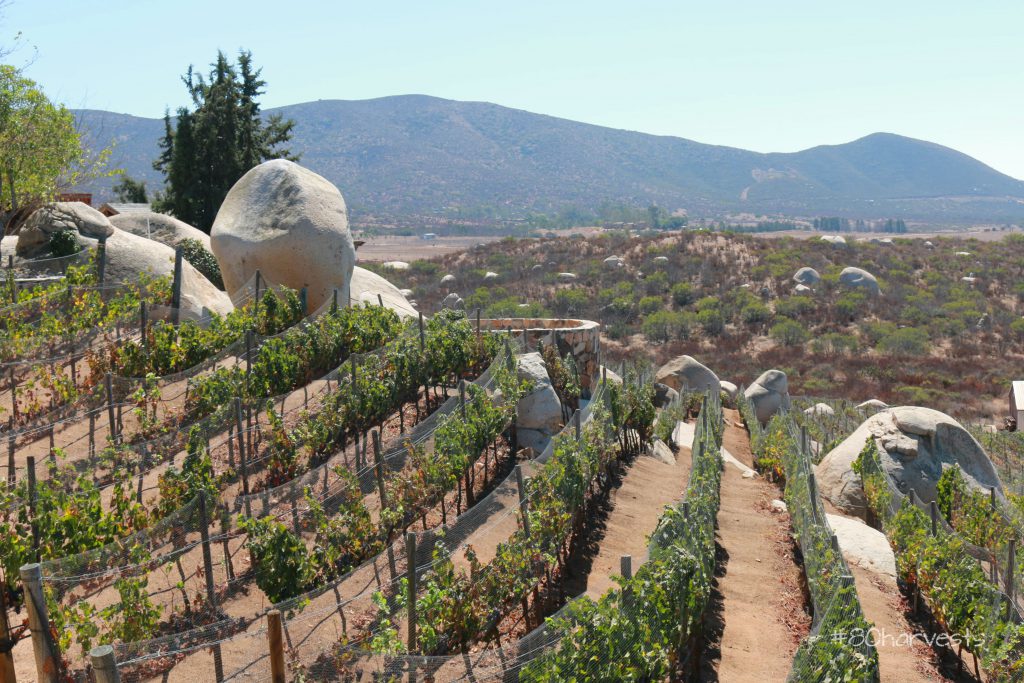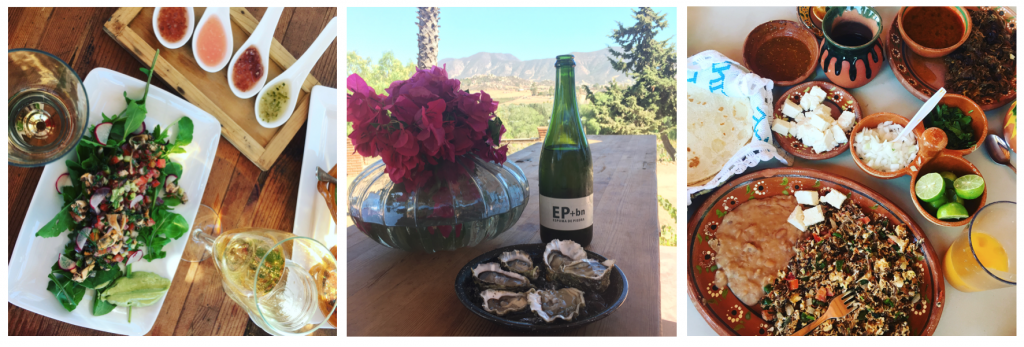There are some memories that make your mouth water, and my recollection of visiting Mexico’s wine region is one of them. It is no secret that the food in Mexico is so delicious it’s drool-worthy. Mexico’s wine however, feels like covert intel. Vineyards are not the first thing that spring to mind when you think about the ‘tequila nation’. But Mexico was, in fact, the first wine-producing country in the Americas – and home to the first winery outside of Europe. Knowing this fact makes me feel pretty smart, and ever since sommelier Pedro Poncelis Jr told me about Mexico’s wine region years ago, I have been itching to go… It certainly didn’t disappoint.
The history of Mexican wine

The blue agave plant
Wild vines were native to Mexico and the local tribes were eating those grapes way before anyone was crusading the seas towards South America. However, unlike the agave plant (from which the natives were already making a primitive version of tequila), there’s no record that they ever fermented grapes.
“There were already grapes in the Americas, but no one had discovered how to make wine,” Pedro tells me during a crash course on Mexican wine history while we drink Tempranillo at his wine school and winery. “When the Spanish came, they started to evangelize the natives and taught them to make wine from the vines here.”
And so began the history of winemaking in Mexico, in 1574. A few years later the Spanish conquistadors had also brought their own vinifera vines from Europe and by the end of the century, Mexico was home to the first commercial winery outside of Europe: Hacienda de San Lorenzo in the Parras Valley, which still exists today as Casa Madero. That means that Mexico’s wine region was founded before any other in the New World… and indeed before many in the Old World.

So if Mexican wine production is so old, why has it been kept so quiet all these years?
Basically because the Spanish set out to destroy the very industry they had created only a century later. The Spanish crown was a notoriously jealous lot and when Mexican wine started to compete with Spanish wine sales, a ban was put in place in 1699. No one was allowed to produce wine in Mexico (except for church purposes).
The prohibition remained until Mexican independence (1821) but that doesn’t mean wine production completely dried up…
Numerous wine producers, mostly members of the clergy, broke the rules during the century-long ban and made wine for themselves and friends to drink. One such renegade, a Jesuit priest, planted vines in Baja California in the early 1700s.
This marked the beginning of the modern Mexican wine region, in a territory altogether different to the hot and humid central regions where Mexican wine had started. The Jesuit priest was onto something in Baja California, and the northern part of the peninsula is where we see the greatest quantity and quality of Mexican wine being made today. Home to 90% of the country’s wine production, Baja California has become the mecca of Mexican wine…
Baja California & the wine regions

As the name suggests, Baja California is literally tucked right under the US and California. Peek over the wall (which does exist by the way) and you can see San Diego. Just over an hour’s drive from the infamous border town of Tijuana, is the heart of Mexican wine country – Guadalupe Valley.
The stereotypical image we have of Mexico isn’t far from the mark when it comes to the climate; it is hot. But Baja California has a unique spot in Mexico, with a maritime influence from the cool Pacific Ocean. The wine regions start only a few kilometres from the sea and it is the cold Pacific current that gives life to the valley.
Morning fog keeps the vines cool until the sun burns through at around 10 a.m. After a full day of sunshine, the afternoon breezes offer a quick refresh before the cold night so typical of desert conditions sets in. The desert also has a significant impact, so much so that frost can be a problem – especially in the valleys further from the coast, like Ojos Negros.
With very little rainfall (200mm annually, and mainly in the winter), Baja California is blissfully free of fungal diseases. But it does mean you need to irrigate, and the downside is that water in Baja California is severely limited.
“If the region had more water (and regulation) it would be a paradise,” Mexico’s most renowned winemaker, Hugo d’Acosta, confides in me as we stand on the sunny terrace overlooking the Casa de Piedra vineyard. “The dry conditions make it very easy to be organic, for example 90% of Mexican vineyards only use sulfur in the vineyards [and no other agrochemicals].”
The dry conditions also mean that winemakers have a huge window to harvest – any time between August and October in normal vintages. This gives them an enviable freedom of choice rarely experienced in the wine world.
The Mexican Wine Revolution & its future
Separate from the mainland of Mexico, Baja California is very much a land of immigrants. Driving around the dusty roads of Guadalupe, between the signs for tacos and cerveza you’ll be forgiven for expecting the odd sign in English for visiting gringos. But Russian? Surprisingly Baja California was home to a significan number of Russian settlers at the beginning of the last century, and they’ve been joined by immigrants from all over Europe, South America, the US and mainland Mexico.
The language, the cuisine, the culture is all reflective of this medley of nationalities inhabiting this idyllic spot of northern Mexico. Most people will speak a fair bit of English in Baja and the food has a combination of Mexican, US and European influences. The culture too is quite different to the complex tapestry of indigenous culture that still thrives in mainland Mexico. At first Baja might feel like a diluted version of Mexico, but you soon realise it has an identity all of its own.
The same can be said about the wine. It isn’t trying to replicate Bordeaux or California, Baja has a thriving independent vintner movement who are making wines reflective of Baja, and Baja only.
In a numerical sense, the boom period of wine production in Baja California was in the 1980s when a couple large wineries were pumping out over 4 million cases a year. That was a period of quantity over quality though, and it wasn’t until the beginning of the 90s when the industry began to modernise, wine drinking became trendy in Mexico City and the industry began to focus on quality.
“We really started to change our viticulture and winemaking,” explains Hans Backoff, the founder of Mexico’s first premium winery, Monte Xanic (founded in 1988). “We started planting with higher densities, using French oak, and changing the whole thing! The wines started improving and people began falling in love with wine. At that time we were at the centre of a new wine revolution in Mexico. It was there, but nobody was paying attention.”
Just a few years later, however, and people were sitting up and taking notice. Guadalupe Valley exploded as a tourist destination, shooting up to the Number 1 destination on Mexico’s hot list. Mouth-watering cuisine made it any gastronome’s dream, and the beautiful landscapes and stunning coastline made it an ideal holiday spot. During their holidays, many Mexican and American tourists began to notice that there had been a quiet revolution in Mexican wine – it was actually drinkable.

A winery in a boat: the innovative architecture of Guadalupe’s wine route
As word spread, the wine valley became prime wine real estate. In ten years, the price of a hectare of vineyard land has shot up from US$10,000 to US$150,000. And the number of producers went from three in the 80s to over 100 today.
The success of Guadalupe could also be its biggest threat though. The semi-arid conditions are only desirable for vine growing if you have enough water to irrigate, and the increased population in Guadalupe and nearby Ensenada has put a lot of pressure on water resources.
So much so that many wine producers are beginning to look to other neighbouring (and less populated) valleys, including San Vincente, Santo Tomas and Ojos Negros, as well as Tecate on the US border.
Wherever the future lies for Mexican wine though, you can be sure it is in Baja California.
So what does Mexican wine taste like?
The combination of abundant sunshine and cool nights make Baja an ideal spot for more intense red varieties. There are a myriad of plantings with everything ranging from Sauvignon Blanc through to Cabernet Sauvignon, but there is a clear favourite among many winemakers and sommeliers: Nebbiolo. “The results and recognition show that this is a variety that has adapted really well here,” says Camilo Magoni, an Italian winemaker who has been making wine in Mexico since 1965. “Why? Because the region has special characteristics. Despite the very hot days, the aromatic profiles are very interesting.”

Old vine Carignan
While the mix of international grapes is increasing, the oldest vines in the region are Carignan, Grenache and Mission. Some winemakers believe these varieties also hold the key to Mexico’s wine future as they are the best adapted to the environment. “Many years ago, most of the vineyards were dry farmed, and the kind of grapes we cultivated 40 years ago were more oriented to dry conditions,” explains Hugo D’Acosta. “But when we opened up to international markets, [the large wine producers] wanted international varieties… But identity is a result of history. In my opinion Grenache is perhaps the most important variety for Mexico’s future.”
The character of Mexican wines depends on the vineyard site. It has a huge mix of soils that have been brought to the surface by the action of the colliding tectonic plates in this very active seismic area. The most remarkable feature are the ginormous boulders that are strewn around the valley. It looks like the aftermath of giants having snowball fights, with rocks.

One of the most distinctive terroirs, for better or worse, is the valley floor of Guadalupe. The whole peninsula was under water millions of years ago and so you find marine sediments across the valley. In Guadalupe, this combination of the mineral content in the soils, the salty sea breeze and the hard water used for irrigation means that many of the wines have a saline quality. That saltiness can lend itself quite nicely to some of the white varieties like Sauvignon Blanc and sparkling wine, for example, which pair wonderfully with the local oysters.

Who could resist these pairings?
Getting to grips with the regional peculiarities and using them to make wines that are world-class, yet distinctively Mexican, is the next step for Mexican winemakers. “You can’t work the same way as in France,” says Victor Torres Alegre, another of Mexico’s longest-practicing winemakers. “People used to use more aggressive macerations and extracted more colour, because that’s how other regions make their wine. But the grapes in our region can have quite bitter tannins. So now we use longer and slower macerations because it suits [our terroir] better.”
An overriding characteristic of Mexico’s wines is their voluptuous and generous nature, which goes hand-in-hand with the unforgettable experience of visiting the wine region. The vivacious people, the vivid colours and the vibrant cuisine – Mexico’s wine region leaves a great taste in your mouth.
So, yes. Wine in Mexico. Really.
Interesting Mexican wine facts:
- Many of the vines are planted on their own roots. Because of the high sand content in the wine region, phylloxera is rarely a problem.
- Mexican wine is big in Japan, although most of the volume consists of Spanish company Freixenet’s Mexican sparkling wine.
Coming soon on 80 Harvests:
- Who’s who in Mexican wine: the Top 10 most influential winemakers and producers
- A wine lover’s guide to Guadalupe: Where to stay, where to eat, where to visit
- The story of wine in Tecate
- Mexican wine in photos
- Video interviews with key Mexican winemakers
- Top pours: Mexican wines to try


